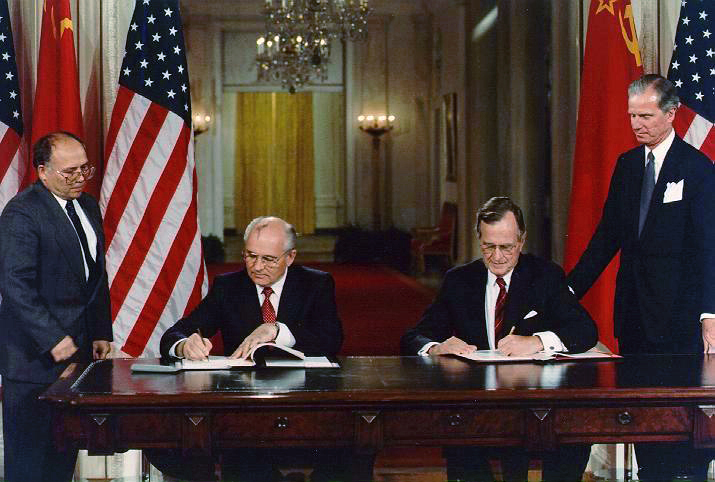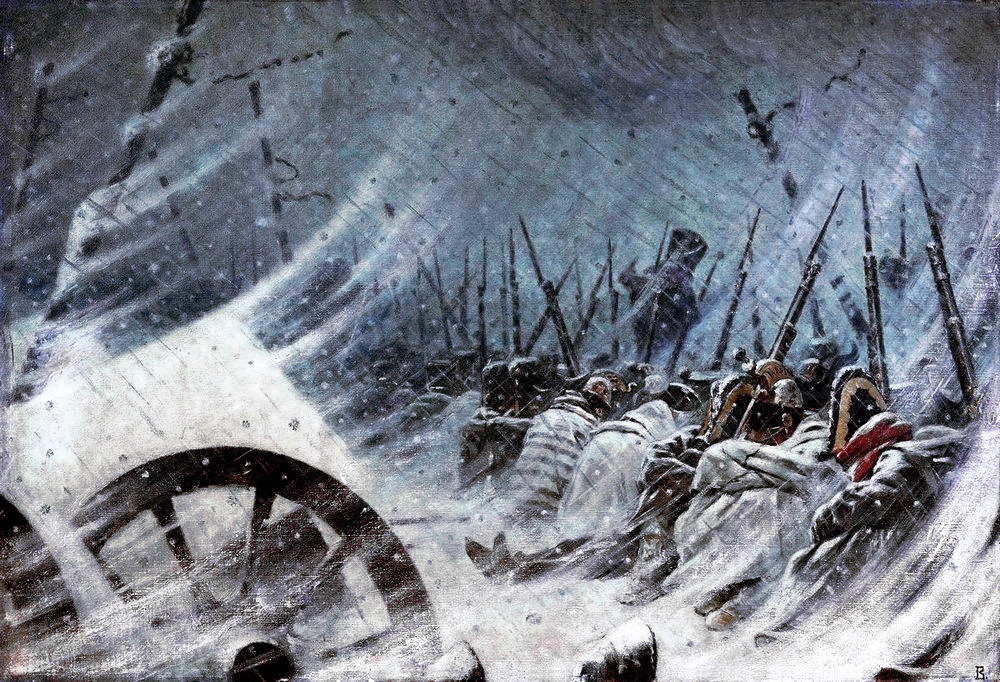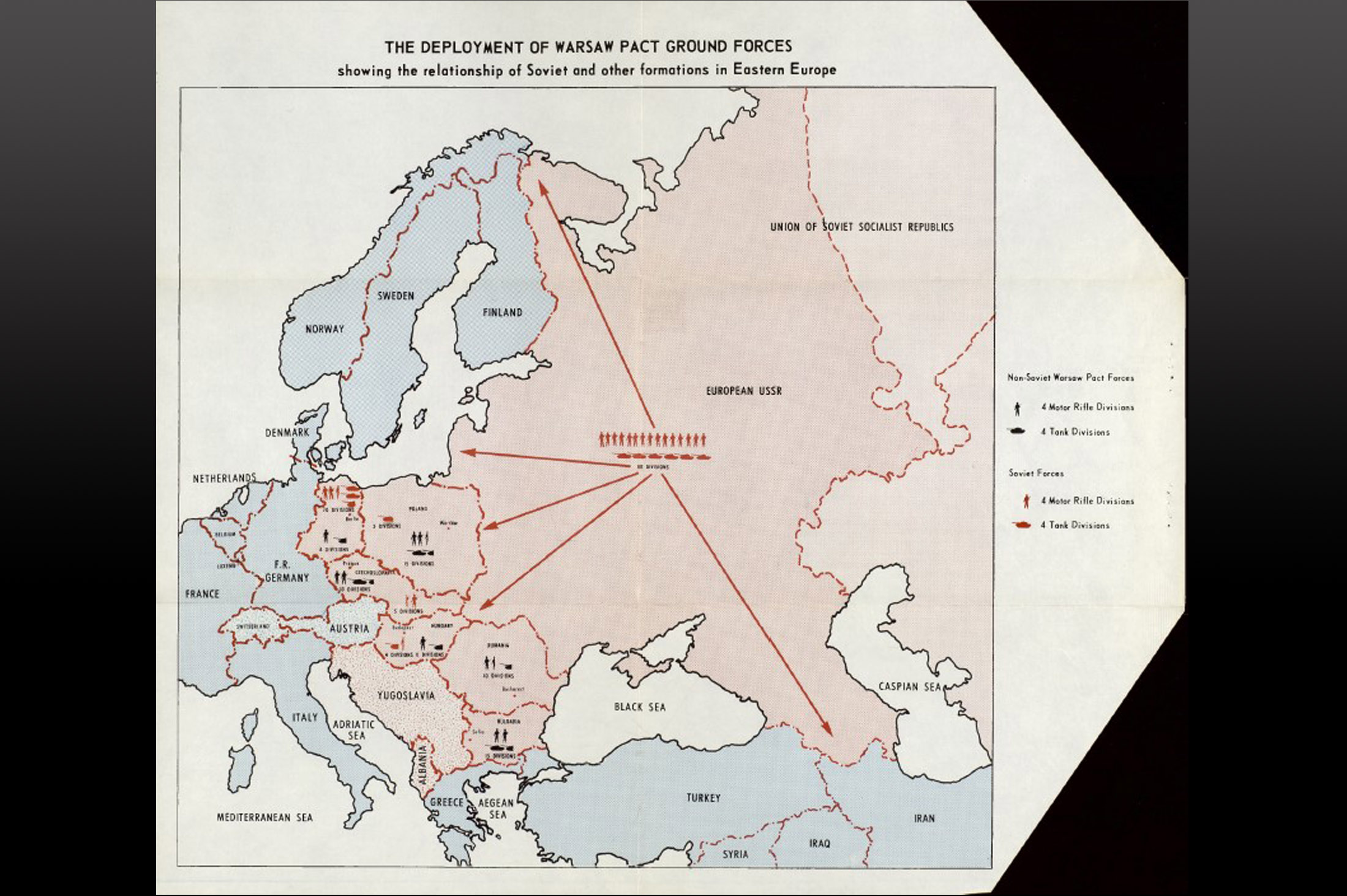Germany, NATO, and the Soviet Union in Eastern Europe
30 May, 2018 | General News

(George Bush and Mikhail Gorbachev at the 1990 Washington Summit)
Twenty-eight years ago today Presidents George H. W. Bush of the United States and Mikhail Gorbachev to the Soviet Union met at a summit in Washington, D.C. Today, history remembers this meeting for the signing of the Chemical Weapons Accord, which committed the superpowers to reducing their stocks of said weapons. Less well-remembered is another, far more contentious topic of discussion at the summit: the status of a re-unified Germany within the NATO Alliance. This issue provides one of the main reasons why the alternate history of Northern Fury diverges from timeline in which we live today.
Today, with Germany forming the economic and political core of the European Union, it’s hard to remember that the reunification of the western and eastern parts of that country was in any way controversial. But it was, and not just in the Soviet Union, where invading German armies had killed more than 20 million Soviet citizens less than half a century before. Even Prime Minister Margaret Thatcher of the United Kingdom expressed reservations about the power of a unified Germany.
The Russians, however, see themselves as being the most threatened by a powerful Germany at the heart of Central Europe, and it can be hard to argue against their narrative of history. Time and again, Russia has been invaded by coalitions of Western and Central European powers: the crusades of the Teutonic Knights, Charles XII of Sweden during the Great Northern War, Napoleon’s great invasion of 1812, the Crimean War, German and Austria-Hungary in World War I, the Anglo-American “Polar Bear” Expedition of 1918-1919, Barbarossa. By comparison, Russian sallies westward have been few, and for the most part reactive rather than aggressive.

(Invading Russia in winter can be an unpleasant experience)
Given their view of history, the Soviets viewed their de facto occupation of Eastern Europe in the aftermath of World War II to be a reasonable precaution against further rampages by coalitions of Western nations, coalitions like the one they saw forming once again in the late ‘40s. And worst of all was when the USSR’s most dangerous enemy, West Germany, joined the NATO Alliance in 1955. This event hurried the Soviets to form their own “defensive” alliance, the Warsaw Pact.

In the end, Mikhail Gorbachev did not put up any real resistance to Germany’s reunification, and in Northern Fury the reunification does happen as it did historically in 1990, with the Federal Republic of (West) German absorbing the (East) German Democratic Republic and moving the German capital from Bonn to Berlin. What Bush and Gorbachev discussed (and did not resolve) at the 1990 Washington Summit was whether or not this enlarged Germany had any right to remain in NATO.
Where Northern Fury diverges from history is in the Soviet response to Germany’s continuing within the alliance. Russians feared (and still fear) a powerful Germany at the heart of Europe, and with justification; twice in the 20th century German invasions presented Russia with an existential threat and killed tens of millions of Russian soldiers and civilians. What if the Soviets had been less willing to accede to Germany’s continued NATO membership? What if the USSR’s leadership made this issue a justification for maintaining their grip on the Soviet “Near Abroad” and what remained of their Eastern European satellite states?
Northern Fury explores these counterfactuals and the war that might have ensued if the Soviets decided to resolve the dispute on the field of battle.